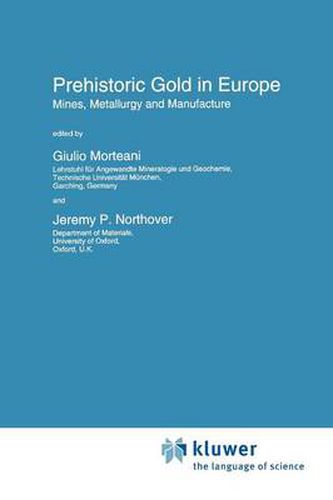Readings Newsletter
Become a Readings Member to make your shopping experience even easier.
Sign in or sign up for free!
You’re not far away from qualifying for FREE standard shipping within Australia
You’ve qualified for FREE standard shipping within Australia
The cart is loading…






This title is printed to order. This book may have been self-published. If so, we cannot guarantee the quality of the content. In the main most books will have gone through the editing process however some may not. We therefore suggest that you be aware of this before ordering this book. If in doubt check either the author or publisher’s details as we are unable to accept any returns unless they are faulty. Please contact us if you have any questions.
Interest in the study of early European cultures is growing. These cultures have left us objects made of gold, other metals and ceramics. The advent of metal detectors, coupled with improved analytical techniques, has increased the number of findings of such objects enormously. Gold was used for economic and ceremonial purposes and thus the gold objects are an important key to our understanding of the social and political structures, as well as the technological achievements, of Bronze and Iron Age European societies.
A correct interpretation of the information provided by gold and other metal objects requires the cooperation of experts in the fields of social, materials and natural science. Detailed investigation of gold deposits in Europe have revealed the composition and genesis of the deposits as sources of the metal.
In Prehistoric Gold in Europe, a group of leading European geoscientists, metallurgists and archaeologists discuss the techniques of gold mining and metallurgy, the socioeconomic importance of gold as coinage and a symbol of wealth and status, and as an indicator of religious habits, as well as a mirror of trade and cultural relations mirrored by the distribution and types of gold objects in prehistoric times.
$9.00 standard shipping within Australia
FREE standard shipping within Australia for orders over $100.00
Express & International shipping calculated at checkout
This title is printed to order. This book may have been self-published. If so, we cannot guarantee the quality of the content. In the main most books will have gone through the editing process however some may not. We therefore suggest that you be aware of this before ordering this book. If in doubt check either the author or publisher’s details as we are unable to accept any returns unless they are faulty. Please contact us if you have any questions.
Interest in the study of early European cultures is growing. These cultures have left us objects made of gold, other metals and ceramics. The advent of metal detectors, coupled with improved analytical techniques, has increased the number of findings of such objects enormously. Gold was used for economic and ceremonial purposes and thus the gold objects are an important key to our understanding of the social and political structures, as well as the technological achievements, of Bronze and Iron Age European societies.
A correct interpretation of the information provided by gold and other metal objects requires the cooperation of experts in the fields of social, materials and natural science. Detailed investigation of gold deposits in Europe have revealed the composition and genesis of the deposits as sources of the metal.
In Prehistoric Gold in Europe, a group of leading European geoscientists, metallurgists and archaeologists discuss the techniques of gold mining and metallurgy, the socioeconomic importance of gold as coinage and a symbol of wealth and status, and as an indicator of religious habits, as well as a mirror of trade and cultural relations mirrored by the distribution and types of gold objects in prehistoric times.